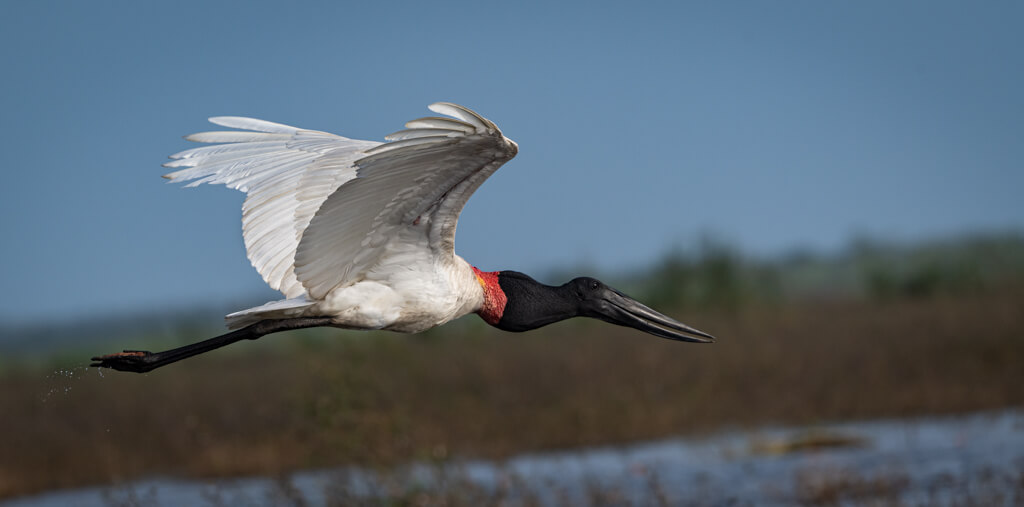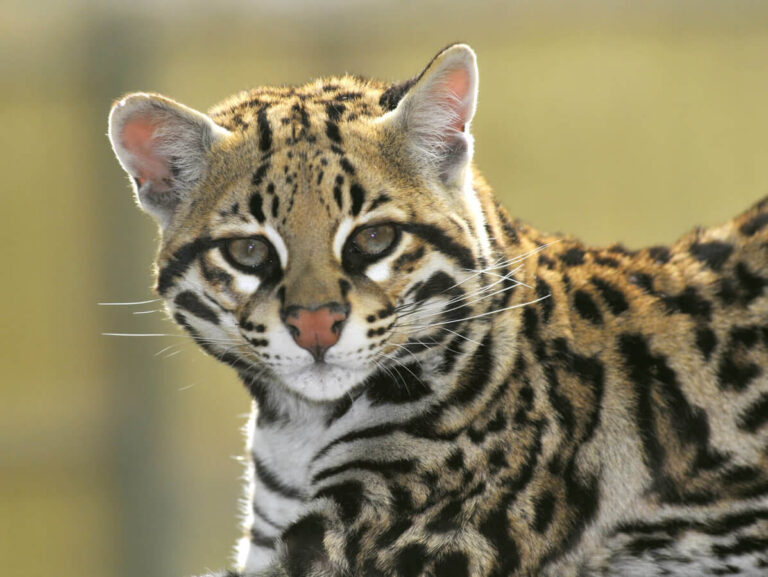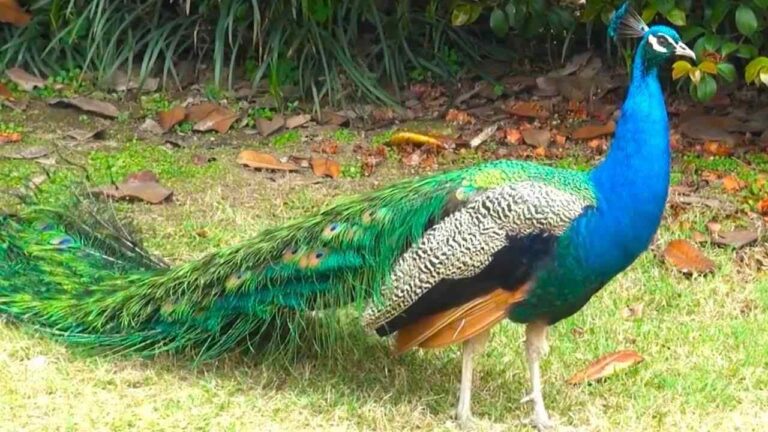Jabiru: A Detailed Overview of This Majestic Stork
The Jabiru (Jabiru mycteria) is an iconic bird of the Americas, known for its large size, striking appearance, and important role in wetland ecosystems. This comprehensive article will explore the scientific classification, physical characteristics, habitat, behavior, diet, reproduction, predators, conservation status, and more.
Additionally, we’ll delve into its evolutionary history, relationship with humans, and fascinating facts about this unique stork.
Contents
Scientific Classification
The Jabiru is scientifically classified as follows:
- Kingdom: Animalia
- Phylum: Chordata
- Class: Aves
- Order: Ciconiiformes
- Family: Ciconiidae
- Genus: Jabiru
- Species: Jabiru mycteria
It belongs to the stork family (Ciconiidae) and is the sole member of the genus Jabiru. Its closest relatives include other giant storks, such as the marabou stork (Leptoptilos crucifer) and the wood stork (Mycteria americana).
Physical Characteristics

The Jabiru is one of the most giant flying birds in the Americas, with an impressive wingspan and distinctive features that make it stand out:
- Height: 140–150 cm (4.6–5 feet)
- Wingspan: 2.3–2.8 meters (7.5–9.2 feet)
- Weight: 8–10 kg (18–22 lbs)
Its body is primarily white, but its neck and head are black, covered with unique, featherless skin. The most distinguishing feature of the Jabiru is its large, thick black bill, which can reach up to 30 cm (12 inches) in length. This massive bill is crucial for catching and consuming its prey. Additionally, the bird sports a distinctive red band around the lower part of its neck.
Habitat and Distribution
The Jabiru inhabits the wetlands, marshes, and swamps of Central and South America. Its range extends from Mexico to Argentina, with the largest populations in Brazil, Paraguay, and Bolivia. The Pantanal, one of the world’s most extensive tropical wetlands, is a critical habitat for this species.
Jabirus prefer shallow freshwater environments where they can easily wade through the water for food. They are often seen in open areas with minimal tree cover, although they will use trees for nesting.
Behavior and Social Structure

Jabirus are solitary or semi-social birds, often seen alone or in pairs, though they may gather around abundant food sources in small groups. They are primarily diurnal, meaning they are active during the day, using their robust bill to probe the water or mud for prey.
Despite not having a well-developed syrinx (voice box), they are also known for their loud vocalizations. They communicate through bill clattering and deep guttural sounds, particularly during courtship or territorial disputes.
Diet and Feeding Habits
The Jabiru’s diet mainly consists of:
- Fish
- Amphibians (frogs, tadpoles)
- Crustaceans (crabs, crayfish)
- Insects
- Small reptiles
Using its giant bill, the Jabiru captures prey by wading through shallow water and swiftly snapping up fish, frogs, or other small animals. Its hunting technique combines sight and touch, relying on its bill to sense movement in the water. Although primarily carnivorous, the Jabiru will also scavenge dead animals, making it a partial opportunistic feeder.
Reproduction and Lifecycle
The breeding season for Jabirus typically occurs during the dry season, when water levels are low and food is abundant. Jabirus form monogamous pairs, with both the male and female contributing to constructing a large nest of sticks and vegetation. These nests are typically built high in trees and can be reused for multiple years.
- Clutch Size: 2–4 eggs
- Incubation Period: 30–35 days
- Fledging: 90–110 days after hatching
Both parents take turns incubating the eggs and feeding the chicks. Young Jabirus proliferate but remain dependent on their parents for several months after fledging.
Predators and Threats
As adults, Jabirus have few natural predators due to their size. However, eggs and chicks are vulnerable to predation from:
- Snakes
- Large birds of prey (eagles, hawks)
- Mammals (raccoons, monkeys)
Human activities, such as habitat destruction, also pose significant threats to the Jabiru population. Wetland drainage, deforestation, and water pollution can all negatively impact their feeding and nesting grounds.
Conservation Status
The Jabiru is currently listed as Least Concern by the IUCN Red List, but its populations are decreasing in some areas due to habitat loss and degradation. Conservation efforts, particularly in regions like the Pantanal, are essential to maintaining stable populations.
Several protected areas across its range are crucial to its survival, but ongoing monitoring and habitat preservation are necessary to ensure the long-term health of Jabiru populations.
Interesting Facts About the Jabiru
- “Jabiru” comes from the Tupi-Guarani language and means “swollen neck,” referring to the bird’s distinctive red neck pouch.
- Despite their size, Jabirus are agile fliers and can soar to great heights, using thermal currents to cover long distances for food.
- They are one of the most enormous storks in the world, rivaled only by species such as the marabou stork and saddle-billed stork.
- The Jabiru plays a vital role in its ecosystem by controlling populations of fish, frogs, and other small animals, helping maintain a balance in wetland environments.
Evolutionary History
Jabirus and other storks are thought to have evolved during the late Eocene period, approximately 40 million years ago. Fossil records suggest that storks have undergone little evolutionary change since their origins, highlighting the success of their adaptations to wetland environments.
The Jabiru’s closest relatives, such as the wood stork (Mycteria americana) and maguari stork (Ciconia maguari), share similar ecological niches. However, the Jabiru is the largest and most distinctive in its genus.
Relationship with Humans
The Jabiru is admired by many for its impressive size and majestic appearance. In regions like the Pantanal, the bird is considered a symbol of natural beauty and plays a role in ecotourism. Birdwatchers and nature enthusiasts often visit protected wetland areas to observe the Jabiru in its natural habitat.
However, the species also faces challenges due to human activities. Agricultural expansion, wetland drainage, and pollution can reduce the availability of suitable nesting and feeding areas. Conservation initiatives that focus on preserving wetlands and raising awareness about the importance of these ecosystems are vital for Jabiru’s future.
Conclusion
The Jabiru is a remarkable bird that commands attention with its size, grace, and ecological importance. As a keystone species in wetland ecosystems, it plays a vital role in maintaining biodiversity. Protecting the habitats of the Jabiru is crucial not only for its survival but also for the health of the ecosystems it inhabits. Through continued conservation efforts and greater awareness, we can ensure that this magnificent bird remains a vital part of the natural world for generations.
- Golden Retriever Pros and Cons: What Every Pet Parent Should Know - 15 September 2025
- Cane Corso Dog Breed: Health, Care, and Lifespan - 14 September 2025
- Catahoula Leopard Dogs: Description, Temperament, Lifespan, & Facts - 21 July 2025







